While trekking in Sikkim is isn’t your average Himalayan destination, it is not widely documented. In this article, we attempted to provide an understanding of hiking in Sikkim and the surrounding Darjeeling Hills, also known as the Eastern Himalayas. And for the best trekking routes in Sikkim, we have compiled a list that covers hiking for everyone, from famous trails to the most unusual paths in Sikkim.
It has its own unique place among travellers for some solid reasons. Be it the high, snowy peaks or the panoramic mountain vistas fused with almost unmatched greenery and biodiversity. At the same time, you can’t miss the warm and welcoming locals, who are truly incredible hosts. And finally, this region is still a little-known Himalayan state, with its mysteries kept intact.
So you can’t miss the following while trekking in Sikkim:
- Majestic mountains and peaks
- Green and vibrant forests with unbeatable biodiversity
- Warm, welcoming local hosts and culture
So, let’s take a glance of trekking in Sikkim through some photos.
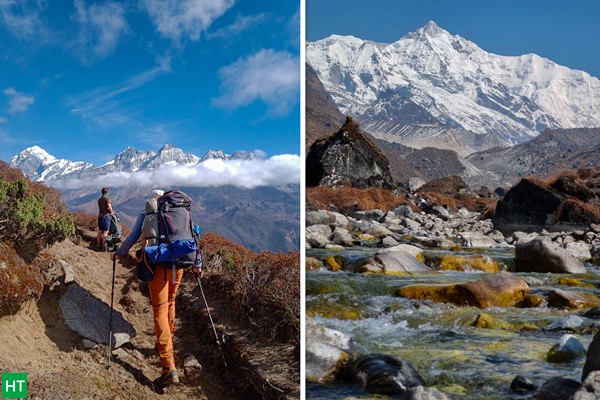
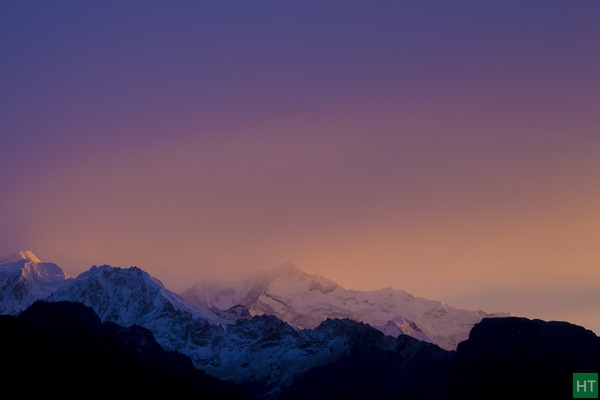
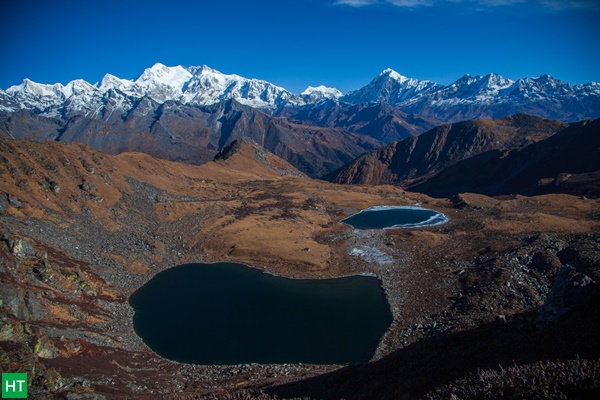
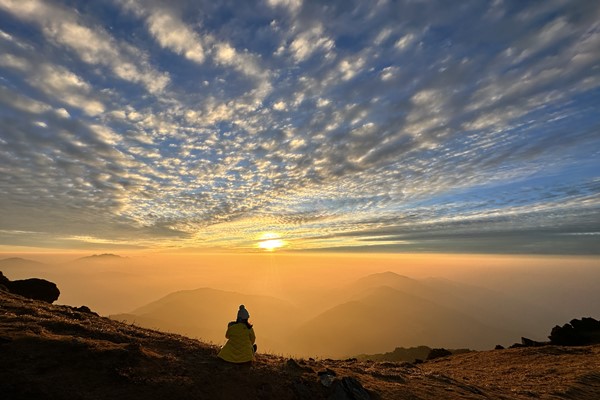
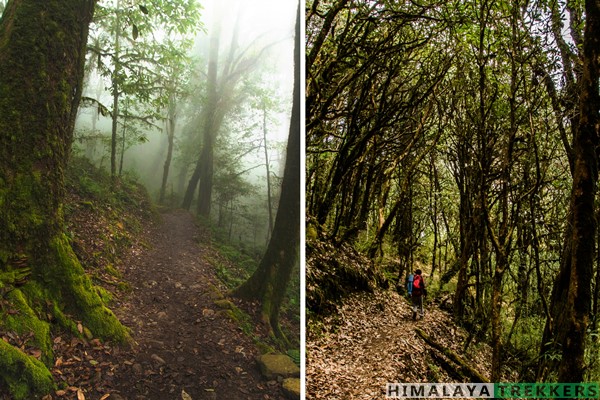
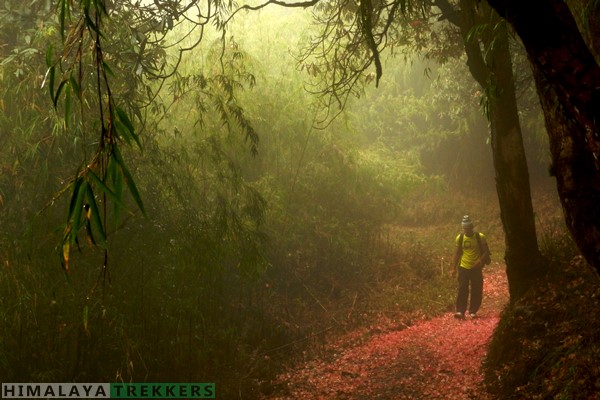
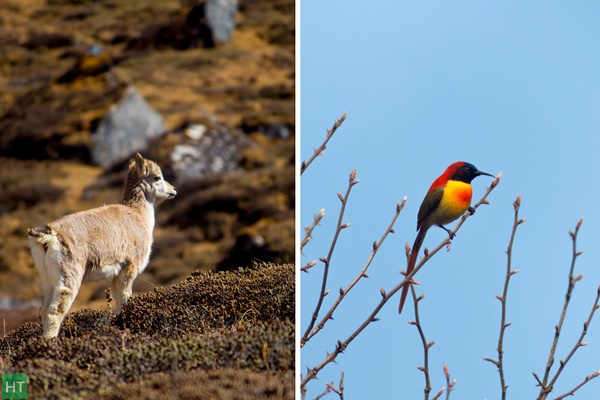
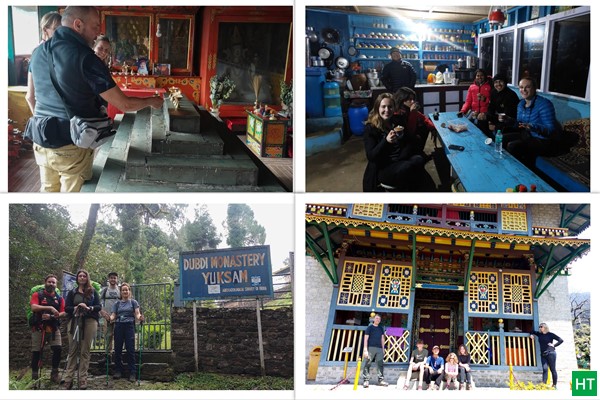
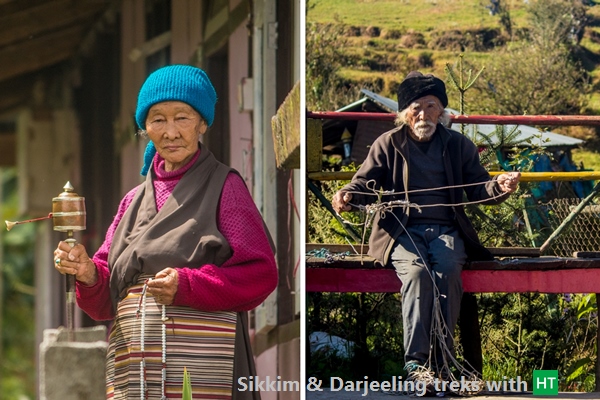
Before looking into the best trekking routes in Sikkim, let us quickly look at the geography of the area and what is the best time for trekking in Sikkim.
Sikkim – Darjeeling region in the Eastern Himalayas:
In general when we mean Sikkim, that most likely includes its sibling Darjeeling area too. Sikkim and adjacent Darjeeling Hills (part of West Bengal) are a relatively compact area that is nestled between Nepal, China/Tibet, and Bhutan. Nepalese, Lepcha, and Bhutia people form the major ethnic group in the region who primarily follow Buddhism.
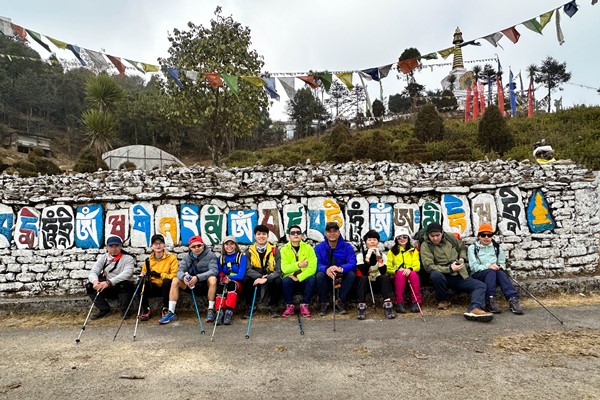
The region is further divided into following adimistrative areas:
Sikkim: This Indian state enjoys a diverse landscape, ranging from snow-capped peaks to lush valleys and subtropical forests in the south.
- Divided into four districts: North, South (renamed Namchi), East, and West.
- Recently, Pakyong district carved out from East Sikkim and Soreng from West Sikkim for administrative purposes.
Darjeeling: Within West Bengal state and located south of Sikkim. Nestled in the foothills of the Himalayas, Darjeeling offers stunning vistas of the Kanchenjunga mountain range and a unique blend of tea plantations and hill stations.
- Previously a district, now split into two: Darjeeling and Kalimpong.
- Kalimpong district encompasses the eastern region.

Climate and trekking seasons for trekking in Sikkim: best time to visit?
The rainy or monsoon season in this region needs a special mention. Sikkim and Darjeeling receive an average of 3000 mm of rain annually. The majority of this rainfall occurs in the typical monsoon from June to September. Simply avoid this period, i.e., between June and late September, for trekking in Sikkim or Darjeeling. Some trails are officially closed during this time. Leeches can be a nuisance during the warmer monsoon months.
So the typical trekking season for Sikkim is between October and May. To put it another way, the trekking season starts in autumn, continues through winter, and stretches to spring and summer until the monsoon begins.
Autumn – Winter seasons (October to February):
- The monsoon recedes after mid September and shoulder season begins (although monsoon may last til Sep end).
- The weather becomes clear once the monsoon is over. October remains pretty green.
- Mid-October to mid-December are particularly known for their crystal-clear mountain views.
- January and February are not suitable for very high altitude, and you may trek up to 4000 m. Expect some snow and a cold climate, though clear weather continues to prevail.
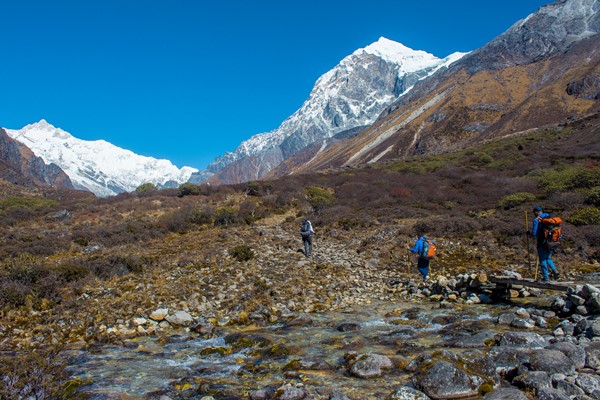
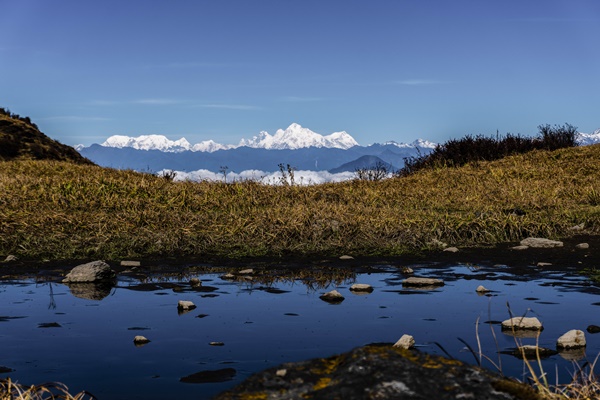
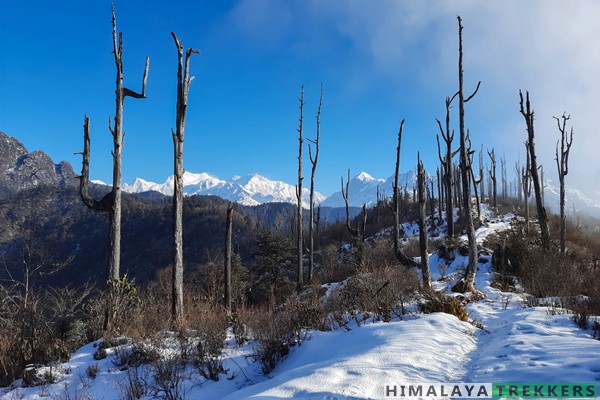
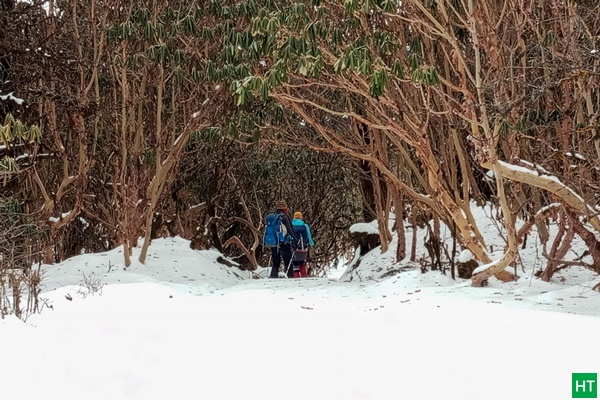
Spring – Summer seasons (March to May):
- From mid of March weather slowly turns misty and cloudy, the signature Sikkim weather during the day time. Morning weather is usually clear and produces good mountain views.
- Flowers start to bloom in abundance, of which Rhododendron and Magnolias are the stars. The forests are filled with birds and butterflies. This weather pattern continues until mid May.
- From late April to late May, expect some drizzle or rain, usually late in the day or in the evening.
- Shoulder season continues until mid June but is not recommended.

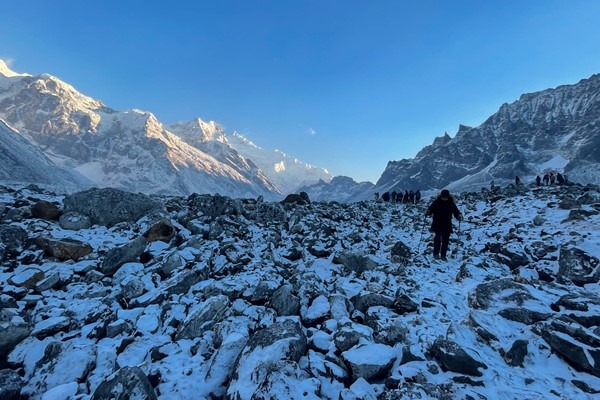

So any of the above seasons is better than the others? What is your opinion? We would say that both are equally beautiful and have their strong reasons to visit the area.
Access to the region, travelling and reaching basecamps:
The infographics below will help you quickly understand how to get to trekking bases and significant tourist attractions in Sikkim and Darjeeling, as well as how they are connected.
There is no railway in Sikkim yet. The work between the NJP and Rangpo train routes is currently underway. Sikkim’s first airport opened recently in Pakyong. However, flights are limited and frequently cancelled or rescheduled owing to poor weather.
Darjeeling city is connected by railways from NJP. Darjeeling Himalayan Railways (DHR) is on the UNESCO Heritage List, and the iconic narrow-gauge toy trains are a true wonder!
Sikkim and Darjeeling has fairly good road network considering their hilly nature. At present days last mile connectivity by road is in place apart from a very few interior villages. Average car speed on the mountains is 20 to 30 km an hour and always keep some buffer time in road travelling.

Airport: Bagdogra (IXB)
Rail: Major railway station is New Jalpaiguri (NJP). Trains from Kolkata, Delhi and other major cities.
Nearby major city: Siliguri in West Bengal. Bagdogra airport is 10 km and NJP railways station is just 5 km from Siliguri city.
Bus: Volvo and ordinary buses from Kolkata to Siliguri (12 to 15 hours).
Entry formalities and permits:
Due to the sensitive international boundaries, Sikkim has some permit requirements and restrictions on entering certain areas. Read all about Sikkim permits on our separate details page. To make it short and simple:
- If you are an Indian citizen, you will need a special permit to visit certain permitted areas in North and East Sikkim during your sightseeing tours. For different trekking routes, you need to obtain the applicable permits from forest departments after paying the applicable fees and charges.
- All foreigners will require a restricted area permit (RAP), formerly known as an ILP, to enter Sikkim. Most of the trekking routes are in protected areas, national parks, or sanctuaries, and a special ‘Trekking Permit/Protected Area Permit is required. This particular permit is issued to a minimum of two foreigners trekking together.
- For trekking inside Darjeeling and Kalimpong Hills, no special permit is required. Any person can obtain the applicable permits from the forest department be solo or in a group.
Can you do an independently or solo trekking in Sikkim?
A trekking guide is a must for any trek that you plan in Sikkim. It is not possible to trek alone without a guide, i.e., without being truly independent! On rare occasions, you may be able to complete low-altitude hikes from one village to another without a local guide. For that, you need to have proper orienteering skills, as local routes are often not well marked.
All major treks in Sikkim fall under ‘Protected Areas”. Indian nationals can independently hire a guide and support team for these trails. However, for foreigners, hiring a travel agency is mandatory. As already mentioned in the permit section, a solo foreigner can’t get a permit for these trails.
Sikkim trekking packages:
Due to permits and restrictions, package booking is the most practical solution for trekking in Sikkim. Surely an experienced tour operator of Sikkim region would add more values to your tour.
Best treks in Sikkim and Darjeeling – from iconic routes to hidden gems
Here we have carefully catered every bit of experience which you may possibly get from trekking in Sikkim. Practically this is almost a complete Guide to trekking trails in Sikkim and Darjeeling that you can meaningfully create. Many of these routes have breathtaking landscapes whereas some will introduce you to the vibrant culture that defines Sikkim and Darjeeling.
The list contains:
- long to medium duration alpine treks in Sikkim, from expedition style to easy camping treks
- Short yet pristine treks and hikes in Sikkim,
- treks in Kalimpong. treks in Darjeeling
- village to village easy homestay trek, Tea-house treks
- Cutural treks connecting villages and monasteries or even trails connecting tea gardens in Darjeeling. We included them all.
For customised tailormade tours we can create itineraries that can combine trails or add more flavours in the tour.
Goechala trek inside Kanchendzongha National Park (KNP):
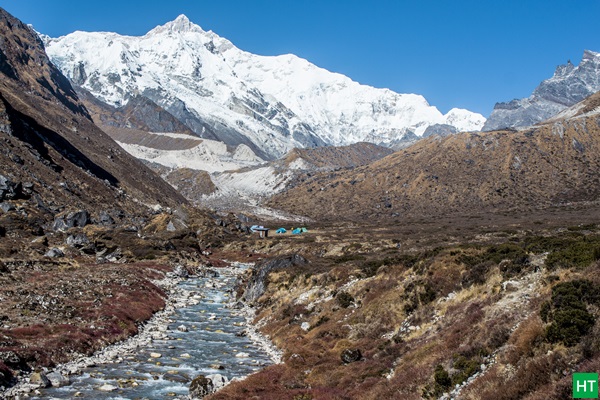
Grade: Moderate (strenuous)
Duration & Length: 7 to 8 trekking days; 80 km
Location: West Sikkim, inside Kanchejunga National Park
Basecamp and endpoint: Yuksom
Highest Altitude: 4600 m/15100 ft
Season: Spring-Summer (March to May) and Autumn-Fall (mid Sep to mid of Dec)
Best time to visit: late March to early May & mid Oct to late Nov
Key features and attractions: Then most iconic and popular trail in Sikkim, outsdtanding peak views from Dzongri and Goechala View Point 1, dense forest, Rhododendron bloom during spring, Yuksom – the first capital of Sikkim, Tsokha monastery,
Singalila Ridge trek – Sandakphu & Phalut trek in Darjeeling :
Grade: Moderate
Duration & Length: Different variants, 3 to 6 trekking days; ~ 40 to 75 km
Location: Singalila National Park in Darjeeling district, West Bengal
Season: Spring-Summer (March to May) and Autumn – Winter (mid Sep to Feb)
Best time to visit: late March to late April & mid Oct to mid of Feb
Basecamp and endpoint: Maneybhanjung & Srikhola
Highest Altitude: 3636 m/11925 ft
Key features and attractions:
Sikkim Monastery hike in homestays – A cultural circuit along the age old monasteries
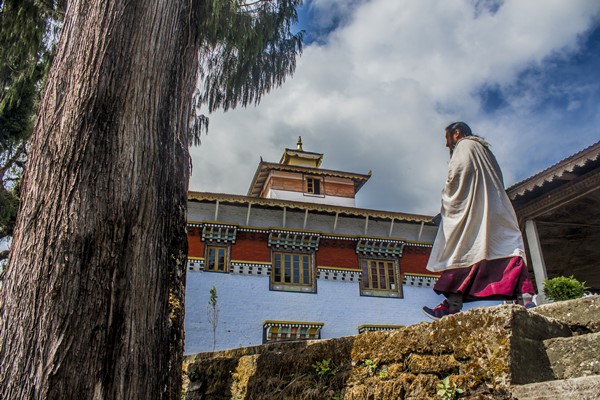
Grade: Easy
Duration & Length: 3 to 4 trekking days; ~ 20 km
Location: West Sikkim
Basecamp and endpoint: Khecheopalri & Tashiding
Highest Altitude: 2140 m/7020 ft
Season: Year around, avoid monsoon, especially July and August
Best time to visit: Mar to May & Oct to Feb
Key features and attractions:
Bajre Dara trek: A short trek with great views of Kanchenjungha
Grade: Easy
Duration & Length: 3 trekking days; ~ 30 km
Location: West Sikkim
Basecamp and endpoint: Melliaching & Khecheopalri
Highest Altitude: 3350 m/11000 ft
Season:Spring-Summer (March to May) and Autumn – Winter (mid Sep to Feb)
Best time to visit: late March to late April & mid Oct to Feb
Key features and attractions:
Dafeybhir Pass trek – Exploring Sikkim alpine lakes :
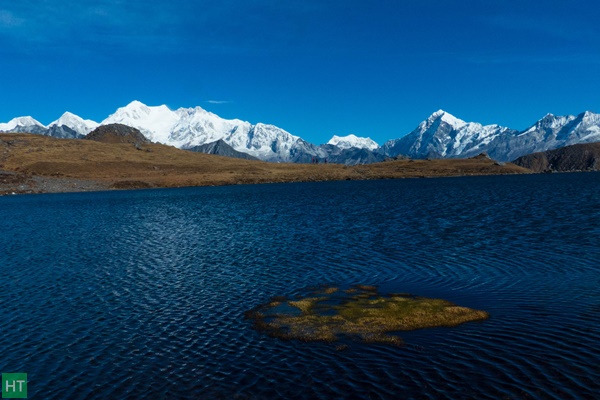
Grade: Moderate (strenuous)
Duration & Length: 7 to 8 trekking days; approx 80 km
Location: West Sikkim, inside Kanchejunga National Park
Basecamp and endpoint:
Highest Altitude: 4635 m/15200 ft
Season: Spring-Summer (March to May) and Autumn-Fall (Oct & Nov)
Best time to visit: Oct and Nov
Key features and attractions:
Dzongri trek – A shorter alternative to Goechala
Grade: Moderate
Duration & Length: 4 t 5 trekking days; 80 km
Location: West Sikkim, inside Kanchejunga National Park
Basecamp and endpoint: Yuksom
Highest Altitude: ~ 4150 m/13612 ft
Season: Spring-Summer (March to May) and Autumn-Winter (mid Sep to Feb)
Best time to visit: late March to early May & mid Oct to late Dec
Key features and attractions:
Green Lake trek in North Sikkim :
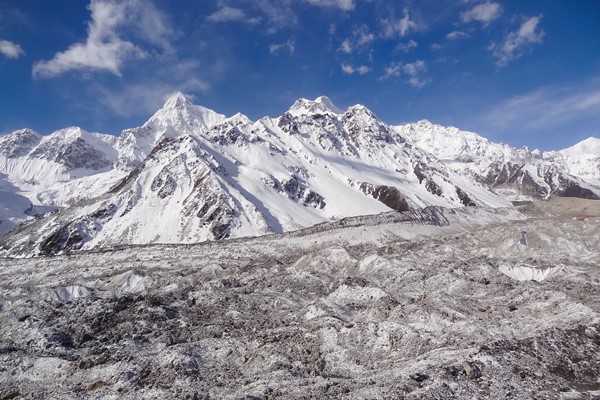
Grade: Moderate (strenuous)
Duration & Length: 8 to 10 trekking days
Location: North Sikkim, inside Kanchejunga National Park
Basecamp and endpoint: Lachen in North Sikkim
Highest Altitude: ~ 4900 m/16070 ft
Season: Spring-Summer (April to May) and Autumn-Fall (mid Sep to Nov)
Best time to visit: April & Oct to Nov
Key features and attractions:
Phoktey Dara – Singalila Pass trek inside Barsey Rhododendron Sanctuary
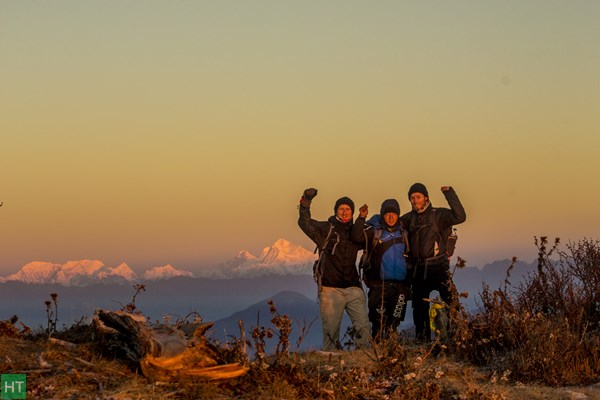
Grade: Easy
Duration & Length:4 to 5 trekking days; ~ 50 km
Location: West Sikkim, inside Barsey Rhododendron Sanctuary
Basecamp and endpoint: Hilley & Uttarey
Highest Altitude: 3700 m/12150 ft
Season:Spring-Summer (March to May) and Autumn – Winter (mid Sep to Feb)
Best time to visit: late March to early May & mid Oct to late Dec
Key features and attractions:
Darjeeling Tea gerden hike through villages:

Grade: Easy
Duration & Length: 2 to 3 trekking days; ~ 20 km
Location: West Sikkim, inside Barsey Rhododendron Sanctuary
Basecamp and endpoint: Maneybhajung & Mariabong Tea garden
Highest Altitude: 1600 m/5250 ft
Season:Spring-Summer (March to May) and Autumn – Winter (mid Sep to Feb)
Best time to visit: Oct to Feb
Key features and attractions:
Maenam top trek: A short hike with outstanding peak panorama

Grade: Easy
Duration & Length: 2 to 3 trekking days; ~ 25 km
Location: South Sikkim, inside Maenam Wildlife Sanctuary
Basecamp and endpoint: Ravangla
Highest Altitude: 3220 m/10560 ft
Season: Spring-Summer (March to May) and Autumn-Winter(mid Sep to Feb)
Best time to visit: Nov to March
Key features and attractions:
Rachela Pass trek inside Neora Valley National Park (Kalimpong) :
Grade: Easy
Duration & Length: 3 to 4 trekking days; 30 km
Location: West Bengal, Kalimpong district, inside Neora Valley National Park
Basecamp and endpoint: Chisang & Lava/Chisang
Highest Altitude: 3150 m/10330 ft
Season: Spring-Summer (March to May) and Autumn-Fall (mid Sep to mid of Dec)
Best time to visit: late March to early May & mid Oct to late Nov
Key features and attractions:
Barshey Rhododendron Sanctuary trek: A surprising short hike
Grade: Easy
Duration & Length: 2 to 3 trekking days; 10 km
Location: West Sikkim, inside Barsey Rhododendron Sanctuary
Basecamp and endpoint: Yuksom
Highest Altitude: Goechala ViewPoint 1 ~ 4600 m/15100 ft
Season: Spring-Summer (March to May) and Autumn-Winter (mid Sep to mid of Dec)
Best time to visit: late March to early May & mid Oct to late Nov
Key features and attractions:
Todey Tangta valley homestay trek: A village trek bordering Bhutan (Kalimpong) :
Grade: Easy
Duration & Length:2 to 3 trekking days, 10 to 15 km
Location: West Bengal, Kalimpong district
Basecamp and endpoint: Chisang
Highest Altitude: ~ 1700 m/5600 ft
Season: Autumn-Winter (Oct to Feb)
Best time to visit: Nov to Jan
Key features and attractions:
We hope that now you have good amount of information regarding trekking in Sikkim and can narrow down your search for the best trekking routes in Sikkim and Darjeeling.
Feel free to get in touch with to create your own tour in Sikkim.

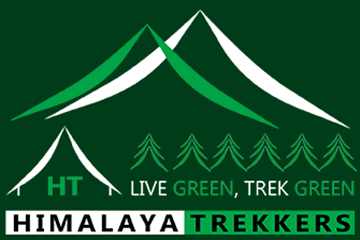

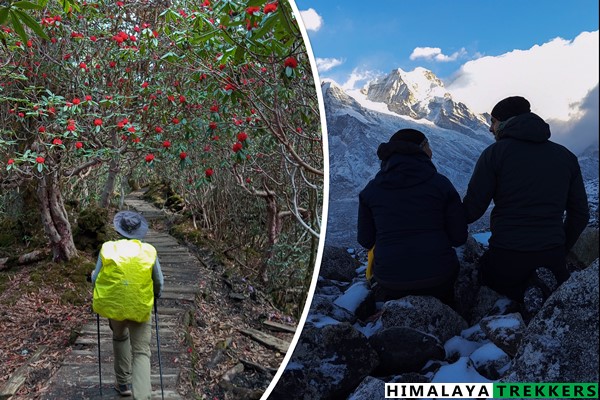





Comments